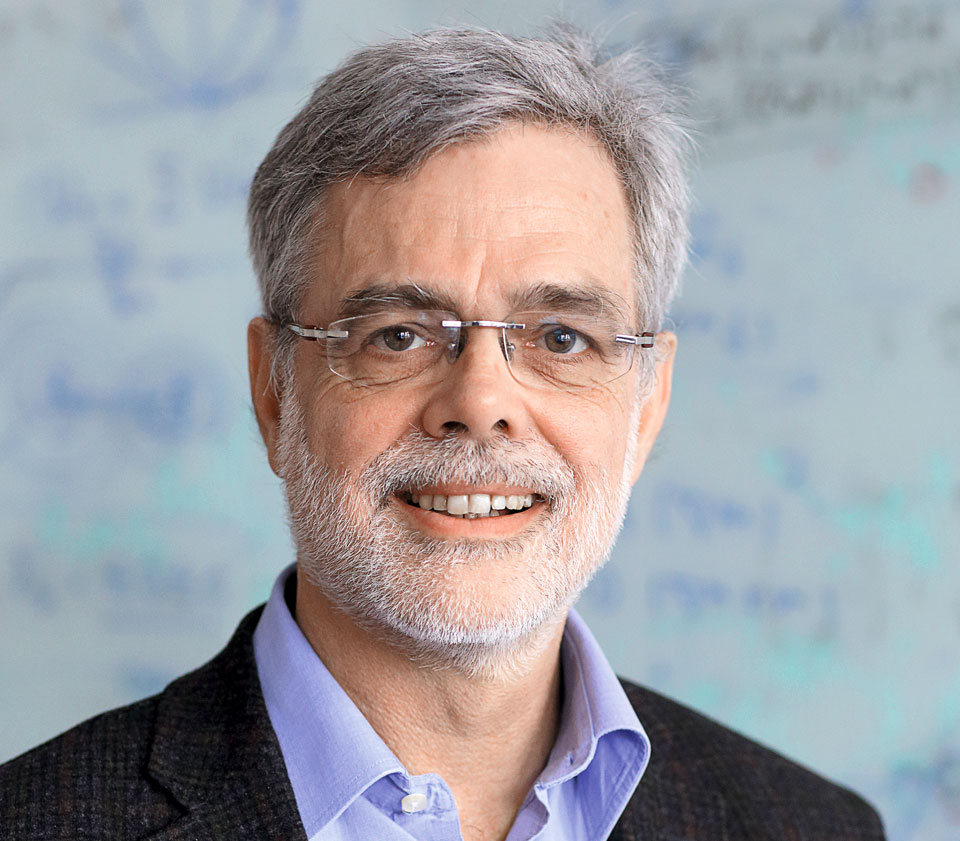Prof. Stefan Blügel: Hopfions in magnetic solids – Theory, Stability, Materials (2024/06/13) |
| ( 2024-06-07 ) |
Title | Hopfions in magnetic solids – Theory, Stability, Materials | Speaker | Prof. Stefan Blügel
Peter Grünberg Institut and Institute for Advanced Simulation Forschungszentrum Jüich and JARA, Germany
| 
| Time | 3:00pm, June 13, 2024 | Place | Conference room on 3F, Material Science and Research Building | | Brief Bio of the Speaker | Prof. Dr. Stefan Blügel is German citizen, Professor for Theoretical and Computational Physics at RWTH-Aachen University, Germany, and Institute Director of the Department Quantum Theory of Materials, which is part of the Peter Grünberg Institute and the Institute of Advanced Simulation, of the Forschungszentrum Jülich in Germany. He studied physics at Saarbrücken University and at RWTH-Aachen University, he carried out his research at the College of William and Mary, Williamburg, VA, USA and Forschungszentrum Jülich and graduated (with distinction) in 1988 with a Ph.D degree in Physics at RWTH-Aachen University. He completed his Habilitation degree in 1996. Between 1988-1990 he was JSPS-postdoctoral fellow at the Institute of Solid-State Physics (ISSP) of the Tokyo University, Tokyo, Japan. Between 2001-2003 he was Associate Professor for Theoretical Physics, University of Osnabrück. He is active in several national and European science and science policy committees, is currently president of CECAM and received several national research awards. His research interest lies in quantum materials, topology, spintronics, magnetism, electronic structure theory and high-performance computing. In the last decade he focused on spin-orbit related phenomena in quantum materials and materials system with emphasis on spinorbitronics and materials for spinorbitronics. He advocated the Dzyaloshinskii-Moriya interaction and skyrmions at surfaces and interfaces. | Abstract |
Topological magnetic textures or multidimensional magnetic topological defects are currently of great interest in condensed matter physics due to their rich science and potential applications in information technology. In contrast to two-dimensional chiral magnetic skyrmions, which are currently under intense scrutiny both theoretically and experimentally, their three-dimensional (3D) counterpart, known as Hopfions, were only recently observed experimentally [1] and only in confined geometries. Hopfions are stable solutions of the magnetization field with a knotted topological structure. In particular, their simplest spin texture can be described as a closed torus with a topologically nontrivial spin texture in the cross-section profile. Instead of topological charges, the topological invariants are linking numbers. However, physical realizations of free moving hopfions in bulk magnets have so far been elusive. The understanding of the formation, stability, dynamics and materials science of Hopfions in magnetic solids is by far much less developed than for skyrmions but is a subject on a rise. In this presentation I report on our advanced micromagnetic theory [2] in which we derived analytical conditions of Heisenberg exchange parameters under which isolated Hopfions can be expected. We combine atomistic spin-dynamics with harmonic transition state theory [3] to investigate the lifetime of hopfions and related decay mechanisms. In this presentation I report also on our effort to explore suitable classes of materials to host magnetic hopfions. Combining density functional theory with Monte Carlo calculations we address systematically the case of chemical disorder and temperature in order to approach the optimal magnetic parameter field. According to our theory we do not expect Hopfions in non-centrosymetric magnetic crystals, but I report on the observation of a Hopfion in FeGe in a non-centrosymetric magnetic crystals stabilized by a skyrmion string [4]. Funding is provided by the European Research Council (ERC) under the European Union’s Horizon 2020 research and innovation programme (Grant 856538 – 3D MAGiC), the Joint Lab Virtual Materials Design (JL-VMD). Support of computing time from JARA-CSD and supercomputer center (grant numbers jara0182, jara0224) is gratefully acknowledged. [1] N. Kent et al., Nat. Commun. 12, 1562 (2021). [2] F.N. Rybakov et al., Apl. Mater. 10, 111113 (2022). [3] M. Sallermann, H. Jònsson, and S. Blügel, Phys. Rev. B 107, 104404 (2023). [4] Fengshan Zheng et al., Nature 623, 718 (2023). |
|
|
|
